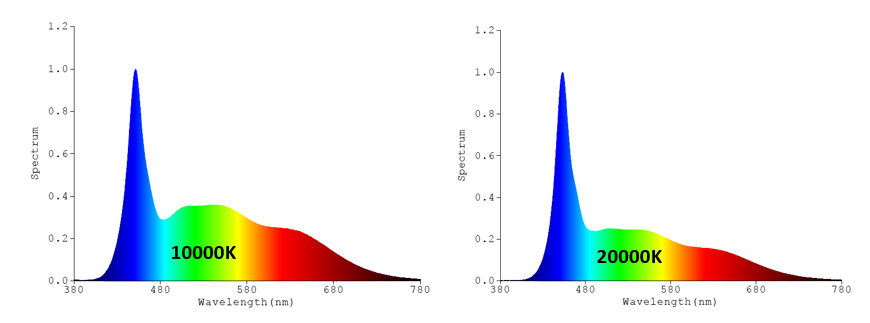- Joined
- Aug 14, 2019
- Messages
- 834
- Reaction score
- 4,741
I can't seems to find out the spectrum for 20000K and 30000K cold white LEDS. I tried to find online, with not much luck so far. If anyone have any luck, preferbly not for Cree LEDs, can you post it.
I'm quite intrested to see mostly the where the blue peaks at for these 2 types.
Thanks.
I'm quite intrested to see mostly the where the blue peaks at for these 2 types.
Thanks.














